UChicago Students Survey Biodiversity on Penikese Island and Around Cape Cod

“Study nature, not books” took on renewed meaning last month when several University of Chicago students spent a week on Penikese Island surveying its plant and animal biodiversity.
The students were enrolled in a new course, “Biogeography and Species Distribution,” one of five MBL September Courses offered this fall to UChicago undergraduates.
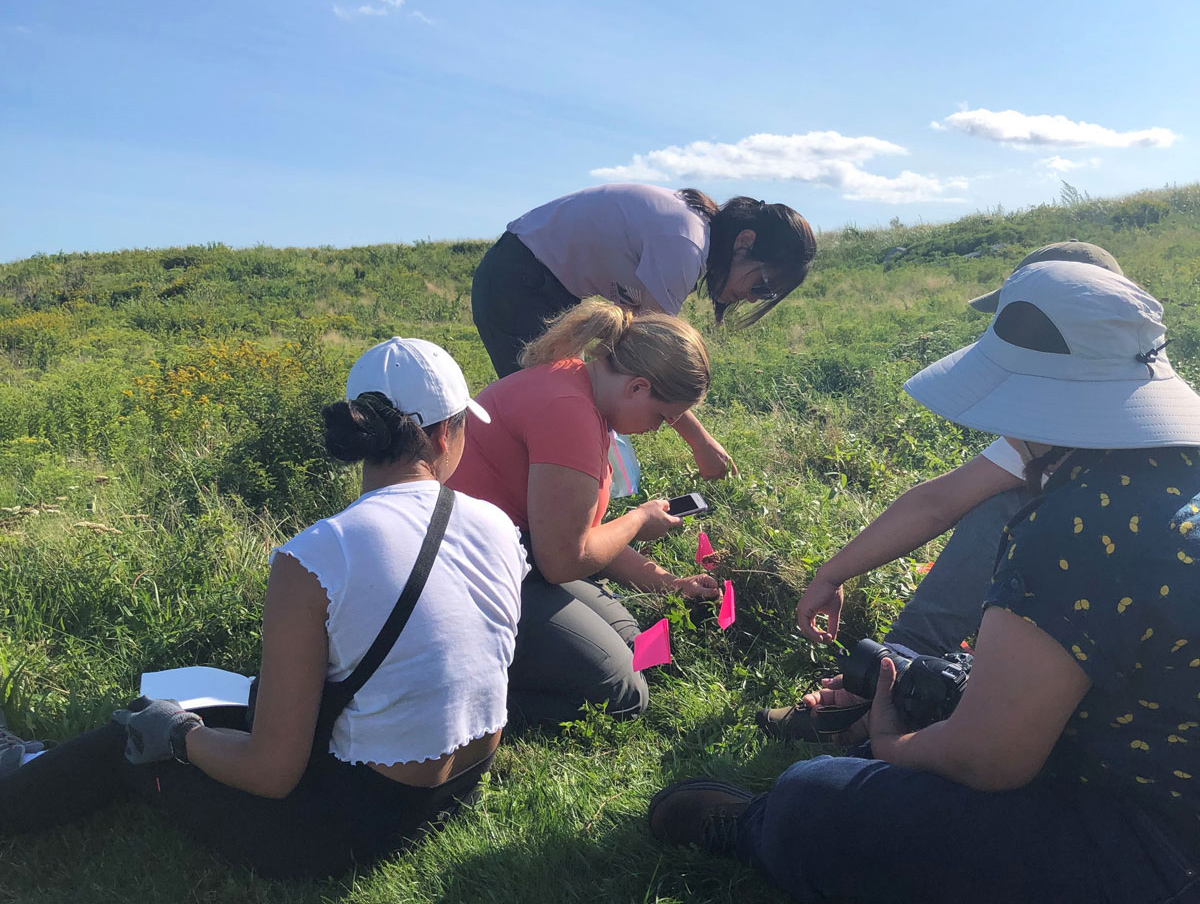 UChicago - MBL September Course students conducting a vegetation survey on Penikese Island. Here, they identify a plant using the phone app iNaturalist. Credit: Eva Kinnebrew
UChicago - MBL September Course students conducting a vegetation survey on Penikese Island. Here, they identify a plant using the phone app iNaturalist. Credit: Eva KinnebrewWearing hip waders and wielding nets, the students captured insects from ponds and shrubs, and calculated the bugs’ distribution and abundance back in the lab. They also updated historic surveys of plants on the grassy island.
Through a partnership between MBL, the University of Chicago, and the Penikese Island School, the students had the whole island to roam and accommodations in the island’s dormitory building.
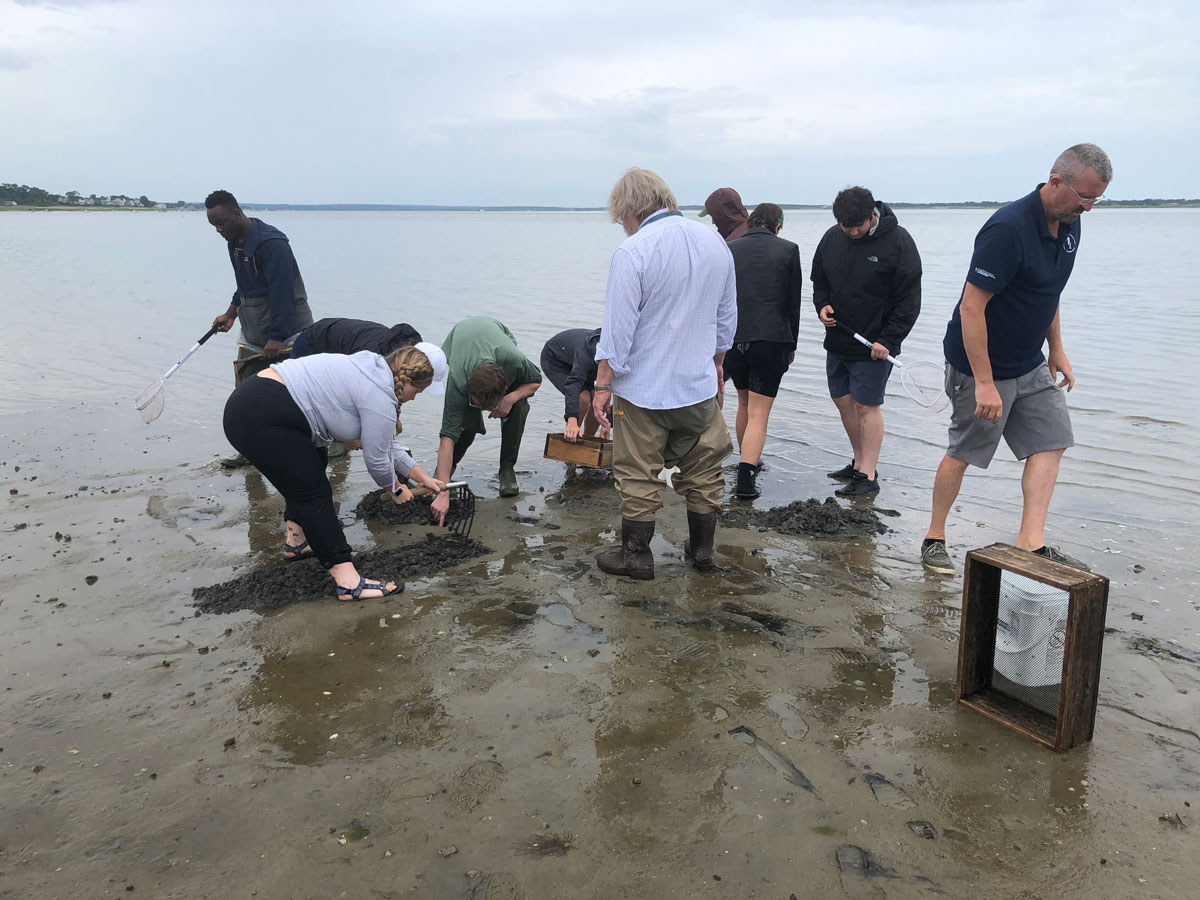 Students use rakes, shovels, and nets to search for intertidal marine invertebrates at a beach in Barnstable, Mass. Students sampled at four beaches on Cape Cod and later compared their biodiversity. Credit: Eva Kinnebrew
Students use rakes, shovels, and nets to search for intertidal marine invertebrates at a beach in Barnstable, Mass. Students sampled at four beaches on Cape Cod and later compared their biodiversity. Credit: Eva KinnebrewPenikese Island, off the coast of Woods Hole, was the site of a natural history school in the early 1870s that popularized the adage, “Study nature, not books.” Some of that school’s students helped found the Marine Biological Laboratory in 1888, and they brought this “learn by doing” ethos with them.
Bracketing their stay on Penikese, the UChicago students spent two weeks at the MBL, where they measured mice species distributions at two nearby field sites. They also collected marine invertebrates from the MBL’s Gemma and from rocky intertidal beaches along the Cape Cod coast.
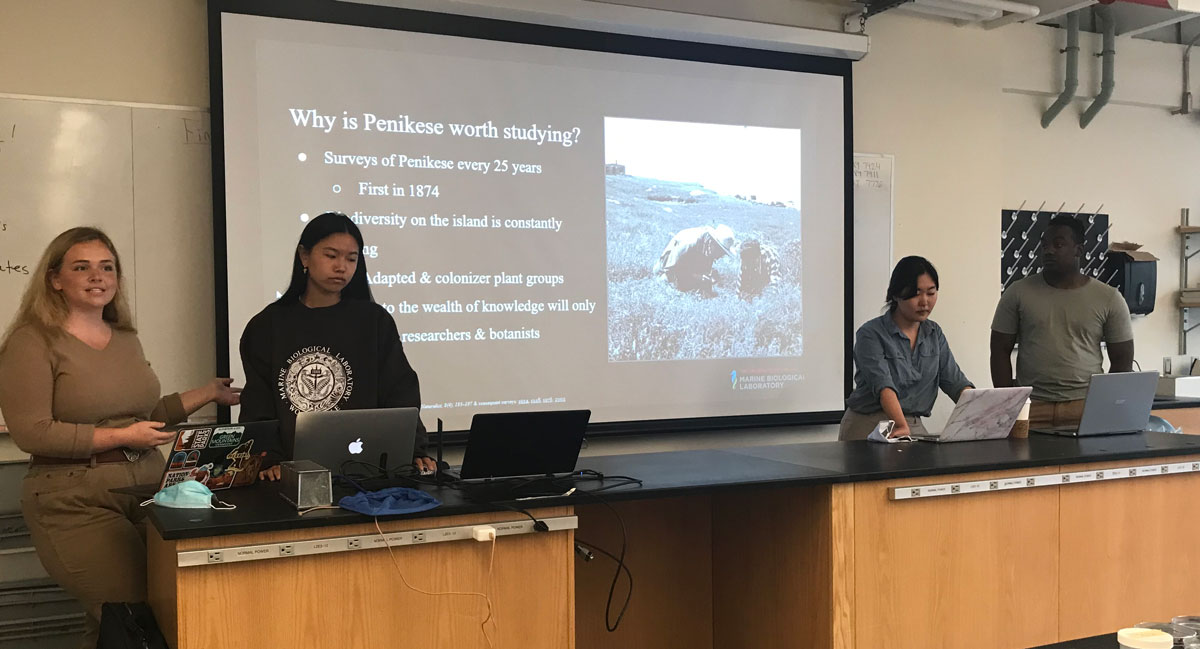
UChicago students present their Penikese Island vegetation survey to fellow MBL September course students. Left to right: Sophie Hartley, Ally Cong, Patricia Zito, Kaji Lungu. Credit: Diana Kenney
“Without Dave Remsen, the MBL’s Director of Marine Research Services, we couldn’t have done the marine invertebrate surveys,” said Eric Larsen, instructional professor at University of Chicago, who led the course but had not been to Woods Hole before. “I couldn’t imagine coming to the MBL and not studying marine invertebrates, so it was really fortunate that Dave was willing and available to help out,” he said.
The other four MBL September Courses this year were all returning favorites: “Microbiomes Across Environments,” “Biodiversity and Genomics,” “Visualization and Biology,” and “Observing Proteins in Action: How to Design and Build Your Own Instruments.”
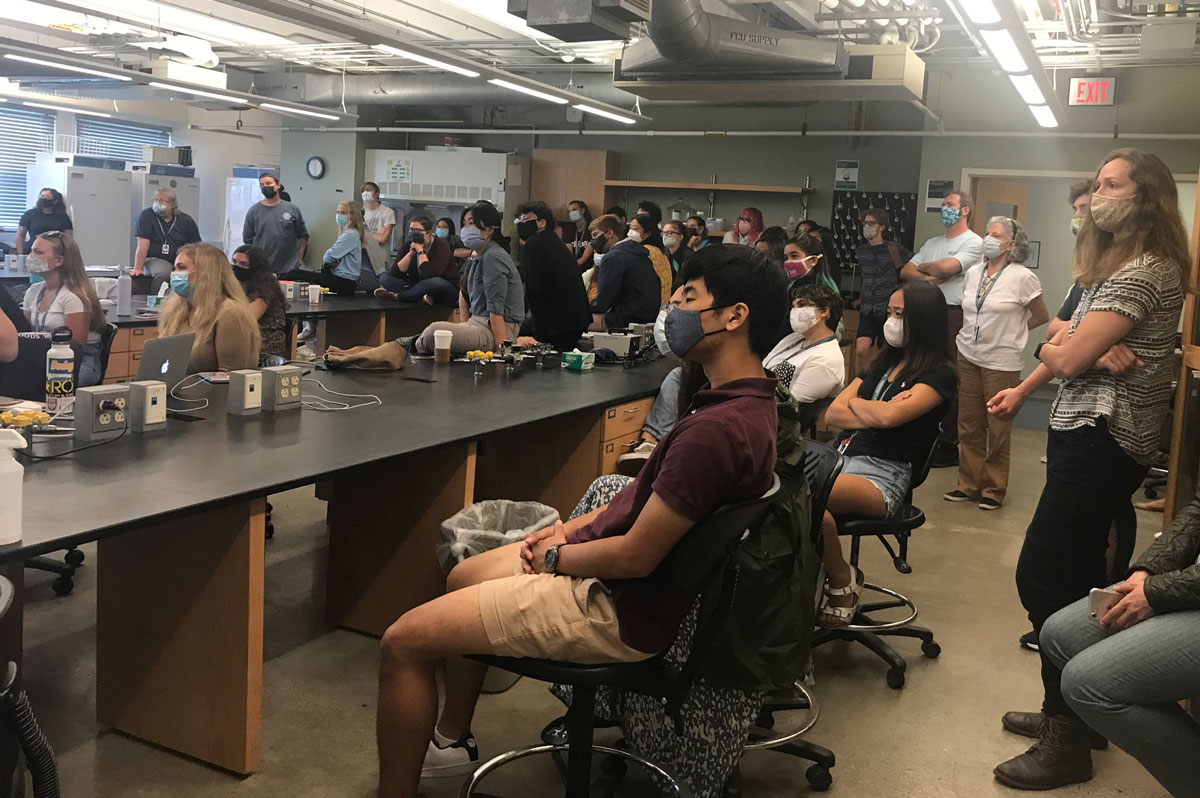 There were 58 UChicago students enrolled in the MBL September courses this fall. Here, students watch one group’s final presentation in Loeb Laboratory. Credit: Diana Kenney
There were 58 UChicago students enrolled in the MBL September courses this fall. Here, students watch one group’s final presentation in Loeb Laboratory. Credit: Diana Kenney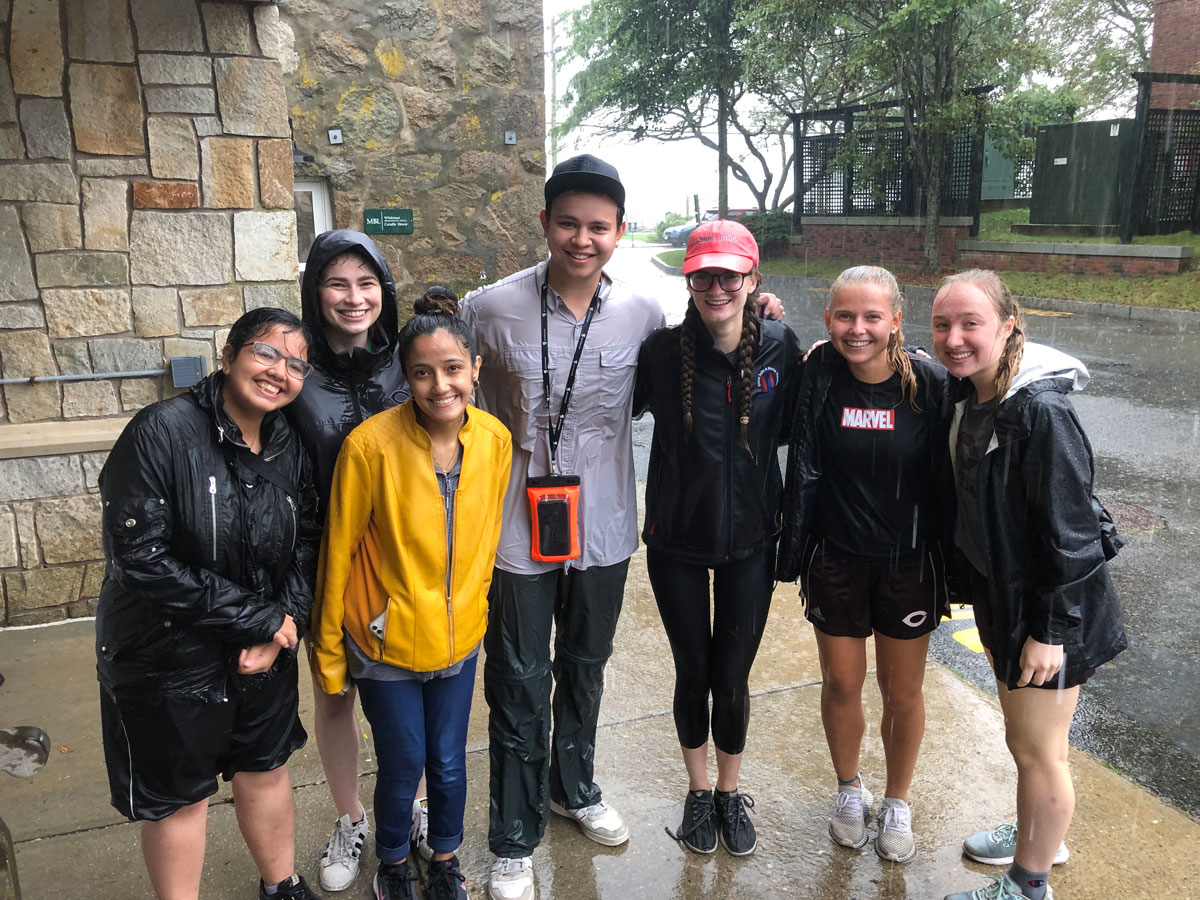 A rainy day didn’t deter UChicago students in the “Visualization and Biology” course from taking a trip on the MBL’s Gemma. Left to right: Sophia Lopez, Anna Rosloniec, Jacquelyn Caraveo, William Krakowka, Rachel Davies-Van Voorhis, Nikola Charouzova, and Elizabeth Brownfield. Credit: Dave Remsen
A rainy day didn’t deter UChicago students in the “Visualization and Biology” course from taking a trip on the MBL’s Gemma. Left to right: Sophia Lopez, Anna Rosloniec, Jacquelyn Caraveo, William Krakowka, Rachel Davies-Van Voorhis, Nikola Charouzova, and Elizabeth Brownfield. Credit: Dave Remsen